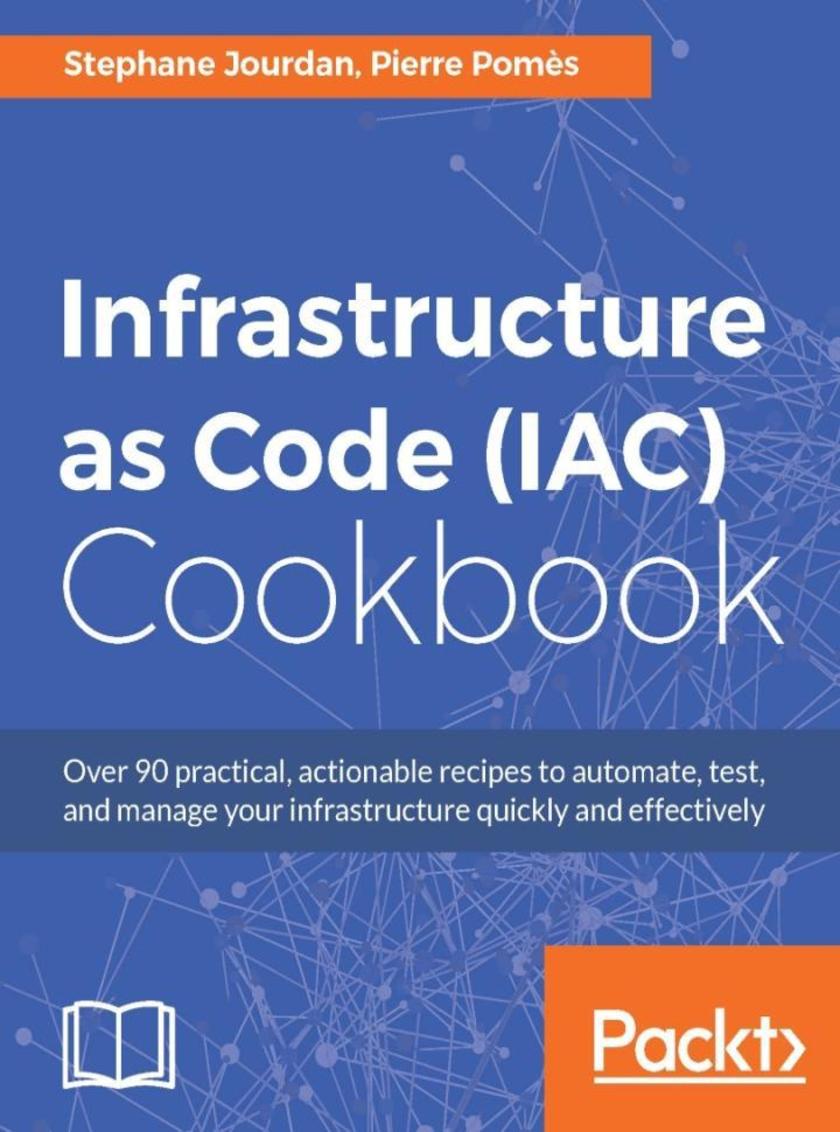
Infrastructure as Code (IAC) Cookbook
¥90.46
Over 90 practical, actionable recipes to automate, test, and manage your infrastructure quickly and effectively About This Book Bring down your delivery timeline from days to hours by treating your server configurations and VMs as code, just like you would with software code. Take your existing knowledge and skill set with your existing tools (Puppet, Chef, or Docker) to the next level and solve IT infrastructure challenges. Use practical recipes to use code to provision and deploy servers and applications and have greater control of your infrastructure. Who This Book Is For This book is for DevOps engineers and developers working in cross-functional teams or operations and would now switch to IAC to manage complex infrastructures. What You Will Learn Provision local and remote development environments with Vagrant Automate production infrastructures with Terraform, Ansible and Cloud-init on AWS, OpenStack, Google Cloud, Digital Ocean, and more Manage and test automated systems using Chef and Puppet Build, ship, and debug optimized Docker containers Explore the best practices to automate and test everything from cloud infrastructures to operating system configuration In Detail Infrastructure as Code (IAC) is a key aspect of the DevOps movement, and this book will show you how to transform the way you work with your infrastructure—by treating it as software. This book is dedicated to helping you discover the essentials of infrastructure automation and its related practices; the over 90 organized practical solutions will demonstrate how to work with some of the very best tools and cloud solutions. You will learn how to deploy repeatable infrastructures and services on AWS, OpenStack, Google Cloud, and Digital Ocean. You will see both Ansible and Terraform in action, manipulate the best bits from cloud-init to easily bootstrap instances, and simulate consistent environments locally or remotely using Vagrant. You will discover how to automate and test a range of system tasks using Chef or Puppet. You will also build, test, and debug various Docker containers having developers’ interests in mind. This book will help you to use the right tools, techniques, and approaches to deliver working solutions for today’s modern infrastructure challenges. Style and approach This is a recipe-based book that allows you to venture into some of the most cutting-edge practices and techniques about IAC and solve immediate problems when trying to implement them.
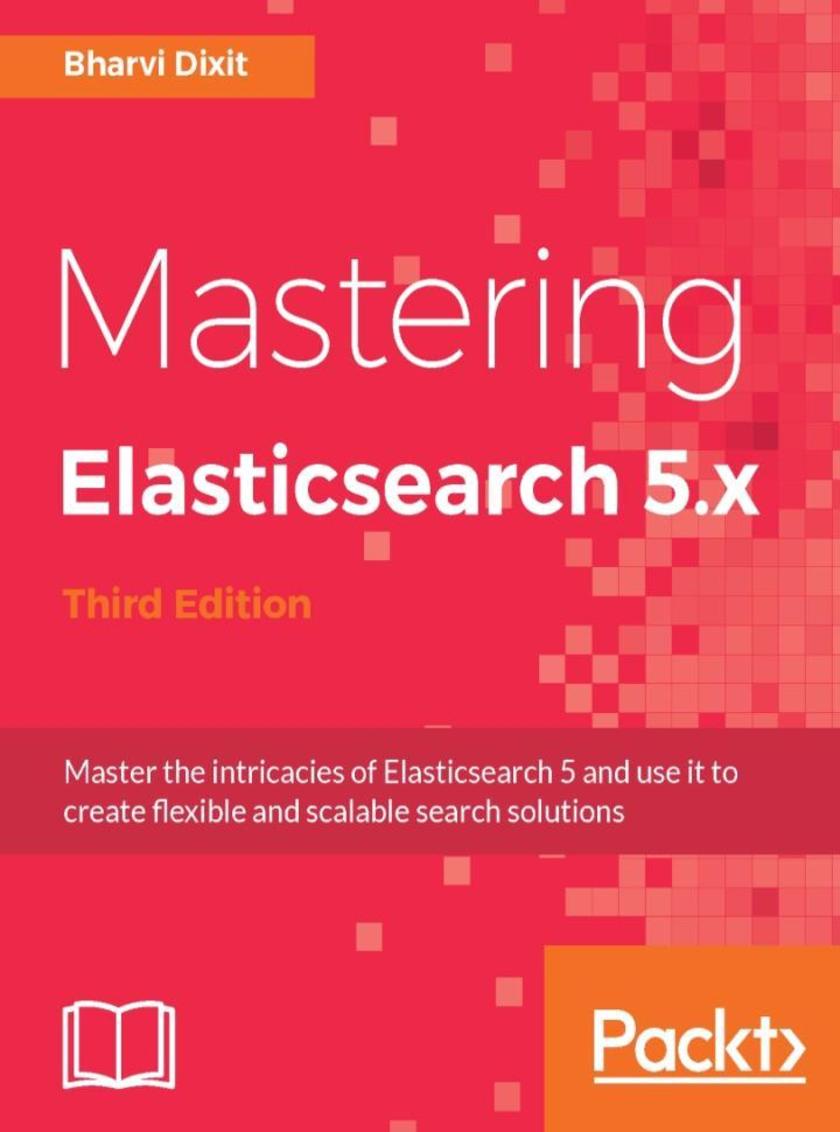
Mastering Elasticsearch 5.x - Third Edition
¥90.46
Master the intricacies of Elasticsearch 5 and use it to create flexible and scalable search solutions About This Book Master the searching, indexing, and aggregation features in ElasticSearch Improve users’ search experience with Elasticsearch’s functionalities and develop your own Elasticsearch plugins A comprehensive, step-by-step guide to master the intricacies of ElasticSearch with ease Who This Book Is For If you have some prior working experience with Elasticsearch and want to take your knowledge to the next level, this book will be the perfect resource for you.If you are a developer who wants to implement scalable search solutions with Elasticsearch, this book will also help you. Some basic knowledge of the query DSL and data indexing is required to make the best use of this book. What You Will Learn Understand Apache Lucene and Elasticsearch 5’s design and architecture Use and configure the new and improved default text scoring mechanism in Apache Lucene 6 Know how to overcome the pitfalls while handling relational data in Elasticsearch Learn about choosing the right queries according to the use cases and master the *ing module including new default *ing language, painlessly Explore the right way of scaling production clusters to improve the performance of Elasticsearch Master the searching, indexing, and aggregation features in Elasticsearch Develop your own Elasticsearch plugins to extend the functionalities of Elasticsearch In Detail Elasticsearch is a modern, fast, distributed, scalable, fault tolerant, and open source search and analytics engine. Elasticsearch leverages the capabilities of Apache Lucene, and provides a new level of control over how you can index and search even huge sets of data. This book will give you a brief recap of the basics and also introduce you to the new features of Elasticsearch 5. We will guide you through the intermediate and advanced functionalities of Elasticsearch, such as querying, indexing, searching, and modifying data. We’ll also explore advanced concepts, including aggregation, index control, sharding, replication, and clustering. We’ll show you the modules of monitoring and administration available in Elasticsearch, and will also cover backup and recovery. You will get an understanding of how you can scale your Elasticsearch cluster to contextualize it and improve its performance. We’ll also show you how you can create your own analysis plugin in Elasticsearch. By the end of the book, you will have all the knowledge necessary to master Elasticsearch and put it to efficient use. Style and approach This comprehensive guide covers intermediate and advanced concepts in Elasticsearch as well as their implementation. An easy-to-follow approach means you’ll be able to master even advanced querying, searching, and administration tasks with ease.

Go Design Patterns
¥90.46
Learn idiomatic, efficient, clean, and extensible Go design and concurrency patterns by using TDD About This Book A highly practical guide filled with numerous examples unleashing the power of design patterns with Go. Discover an introduction of the CSP concurrency model by explaining GoRoutines and channels. Get a full explanation, including comprehensive text and examples, of all known GoF design patterns in Go. Who This Book Is For The target audience is both beginner- and advanced-level developers in the Go programming language. No knowledge of design patterns is expected. What You Will Learn All basic syntax and tools needed to start coding in Go Encapsulate the creation of complex objects in an idiomatic way in Go Create unique instances that cannot be duplicated within a program Understand the importance of object encapsulation to provide clarity and maintainability Prepare cost-effective actions so that different parts of the program aren’t affected by expensive tasks Deal with channels and GoRoutines within the Go context to build concurrent application in Go in an idiomatic way In Detail Go is a multi-paradigm programming language that has built-in facilities to create concurrent applications. Design patterns allow developers to efficiently address common problems faced during developing applications. Go Design Patterns will provide readers with a reference point to software design patterns and CSP concurrency design patterns to help them build applications in a more idiomatic, robust, and convenient way in Go. The book starts with a brief introduction to Go programming essentials and quickly moves on to explain the idea behind the creation of design patterns and how they appeared in the 90’s as a common "language" between developers to solve common tasks in object-oriented programming languages. You will then learn how to apply the 23 Gang of Four (GoF) design patterns in Go and also learn about CSP concurrency patterns, the "killer feature" in Go that has helped Google develop software to maintain thousands of servers. With all of this the book will enable you to understand and apply design patterns in an idiomatic way that will produce concise, readable, and maintainable software. Style and approach This book will teach widely used design patterns and best practices with Go in a step-by-step manner. The code will have detailed examples, to allow programmers to apply design patterns in their day-to-day coding.
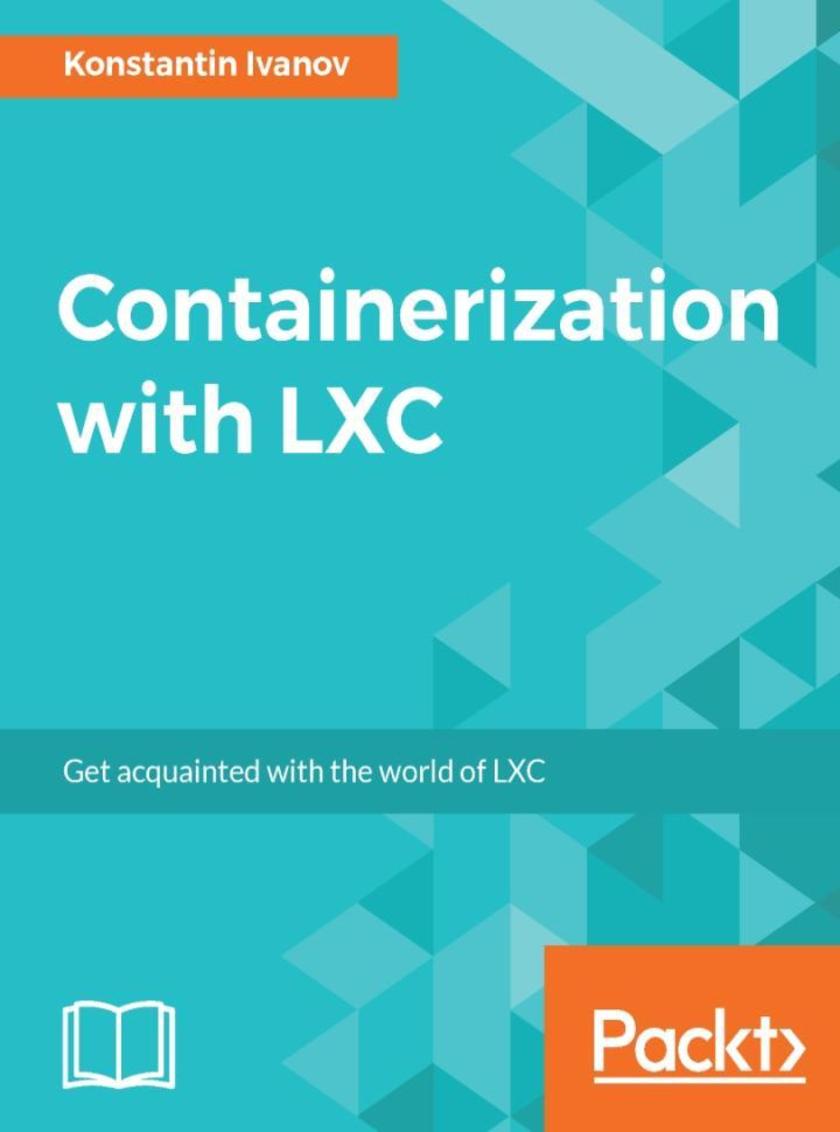
Containerization with LXC
¥90.46
Get acquainted with the world of LXC About This Book Get the most practical and up-to-date resource on LXC and take full advantage of what Linux containers can offer in the day-to-day operations of large-scale applications Learn how to deploy and administer various workloads such as web applications inside LXC Save your organization time and money by building robust and secure containers and by speeding the deployment process of your software Who This Book Is For This book is for Linux engineers and software developers who are looking to deploy applications in a fast, secure, and scalable way for use in testing and production. What You Will Learn Deep dive into the foundations of Linux containers with kernel namespaces and cgroups Install, configure, and administer Linux containers with LXC and libvirt Begin writing applications using Python libvirt bindings Take an in-depth look at container networking Set up monitoring and security with LXC Build and deploy a highly available application with LXC in the cloud In Detail In recent years, containers have gained wide adoption by businesses running a variety of application loads. This became possible largely due to the advent of kernel namespaces and better resource management with control groups (cgroups). Linux containers (LXC) are a direct implementation of those kernel features that provide operating system level virtualization without the overhead of a hypervisor layer. This book starts by introducing the foundational concepts behind the implementation of LXC, then moves into the practical aspects of installing and configuring LXC containers. Moving on, you will explore container networking, security, and backups. You will also learn how to deploy LXC with technologies like Open Stack and Vagrant. By the end of the book, you will have a solid grasp of how LXC is implemented and how to run production applications in a highly available and scalable way. Style and approach A practical guide that introduces the core technologies behind Linux containers and provides a deep dive into installation, configuration, and operations of LXC.
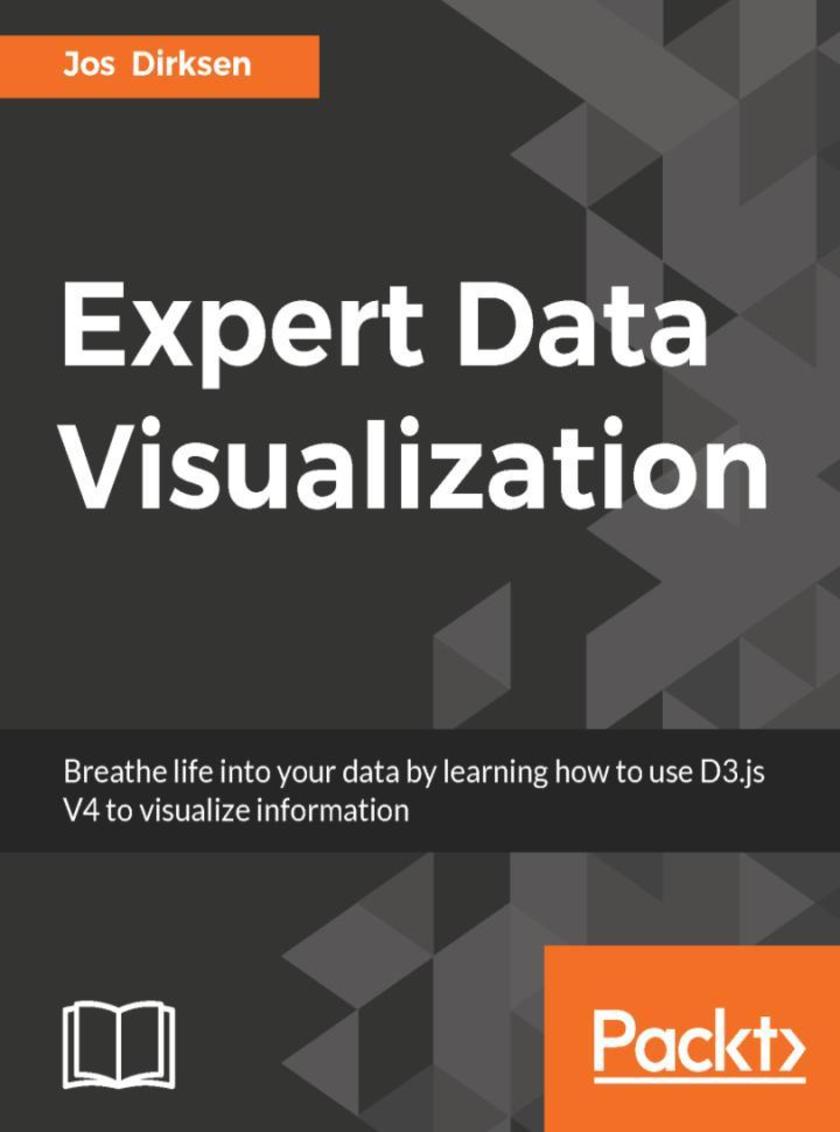
Expert Data Visualization
¥90.46
Do you want to make sense of your data? Do you want to create interactive charts, data trees, info-graphics, geospatial charts, and maps efficiently? This book is your ideal choice to master interactive data visualization with D3.js V4. The book includes a number of extensive examples that to help you hone your skills with data visualization. Throughout nine chapters these examples will help you acquire a clear practical understanding of the various techniques, tools and functionality provided by D3.js. You will first setup your D3.JS development environment and learn the basic patterns needed to visualize your data. After that you will learn techniques to optimize different processes such as working with selections; animating data transitions; creating graps and charts, integrating external resources (static as well as streaming); visualizing information on maps; working with colors and scales; utilizing the different D3.js APIs; and much more. The book will also guide you through creating custom graphs and visualizations, and show you how to go from the raw data to beautiful visualizations. The extensive examples will include working with complex and realtime data streams, such as seismic data, geospatial data, scientific data, and more. Towards the end of the book, you will learn to add more functionality on top of D3.js by using it with other external libraries and integrating it with Ecma* 6 and Type*
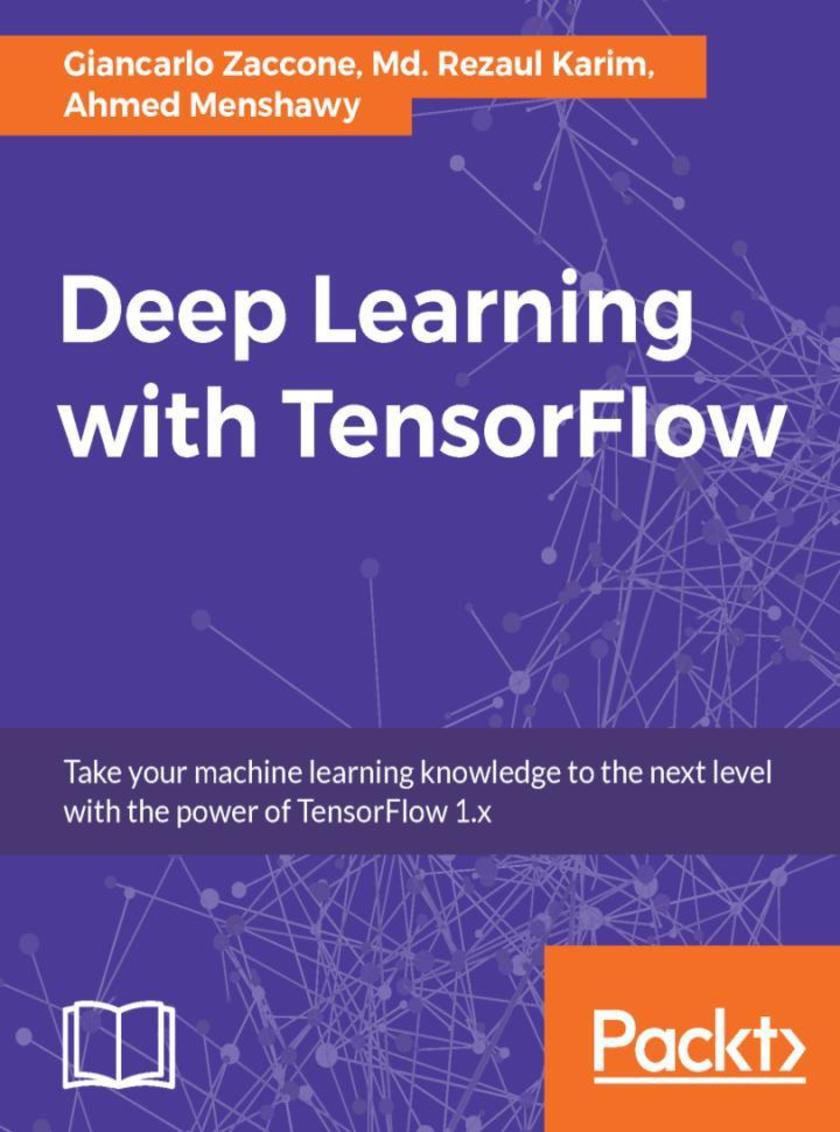
Deep Learning with TensorFlow
¥90.46
Delve into neural networks, implement deep learning algorithms, and explore layers of data abstraction with the help of this comprehensive TensorFlow guide About This Book ?Learn how to implement advanced techniques in deep learning with Google's brainchild, TensorFlow ?Explore deep neural networks and layers of data abstraction with the help of this comprehensive guide ?Real-world contextualization through some deep learning problems concerning research and application Who This Book Is For The book is intended for a general audience of people interested in machine learning and machine intelligence. A rudimentary level of programming in one language is assumed, as is a basic familiarity with computer science techniques and technologies, including a basic awareness of computer hardware and algorithms. Some competence in mathematics is needed to the level of elementary linear algebra and calculus. What You Will Learn ?Learn about machine learning landscapes along with the historical development and progress of deep learning ?Learn about deep machine intelligence and GPU computing with the latest TensorFlow 1.x ?Access public datasets and utilize them using TensorFlow to load, process, and transform data ?Use TensorFlow on real-world datasets, including images, text, and more ?Learn how to evaluate the performance of your deep learning models ?Using deep learning for scalable object detection and mobile computing ?Train machines quickly to learn from data by exploring reinforcement learning techniques ?Explore active areas of deep learning research and applications
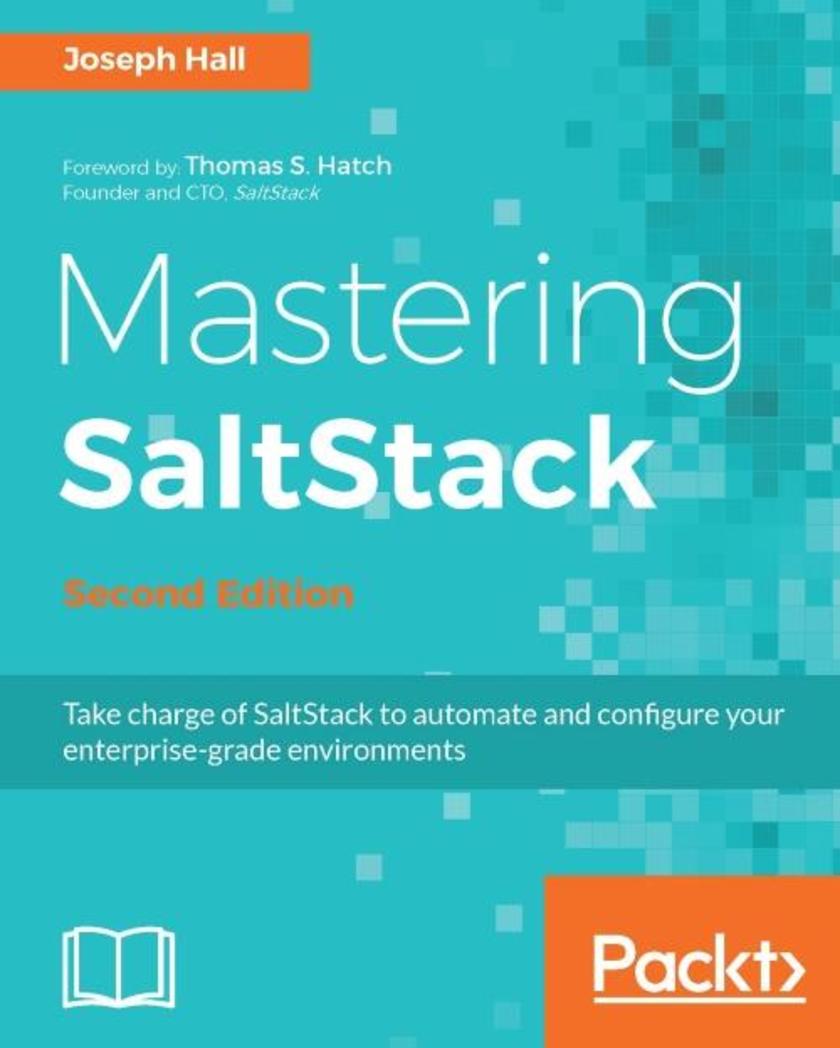
Mastering SaltStack - Second Edition
¥90.46
Take charge of SaltStack to automate and configure your enterprise-grade environments About This Book Automate tasks effectively and take charge of your infrastructure Effectively scale Salt to manage thousands of machines and tackle everyday problems Explore Salt’s inner workings and advance your knowledge of it Who This Book Is For This book is ideal for IT professionals and ops engineers who already manage groups of servers, but would like to expand their knowledge and gain expertise with SaltStack. This book explains the advanced features and concepts of Salt. A basic knowledge of Salt is required in order to get to grips with advanced Salt features. What You Will Learn Automate tasks effectively, so that your infrastructure can run itself Start building more complex concepts Master user-level internals Build scaling strategies Explore monitoring strategies Learn how to troubleshoot Salt and its subcomponents Explore best practices for Salt In Detail SaltStack is a powerful configuration management and automation suite designed to manage servers and tens of thousands of nodes. This book showcases Salt as a very powerful automation framework. We will review the fundamental concepts to get you in the right frame of mind, and then explore Salt in much greater depth. You will explore Salt SSH as a powerful tool and take Salt Cloud to the next level. Next, you’ll master using Salt services with ease in your infrastructure. You will discover methods and strategies to scale your infrastructure properly. You will also learn how to use Salt as a powerful monitoring tool. By the end of this book, you will have learned troubleshooting tips and best practices to make the entire process of using Salt pain-free and easy. Style and approach This book follows a step-by-step conversational tone. Topics are covered in detail through examples and a user-friendly approach.
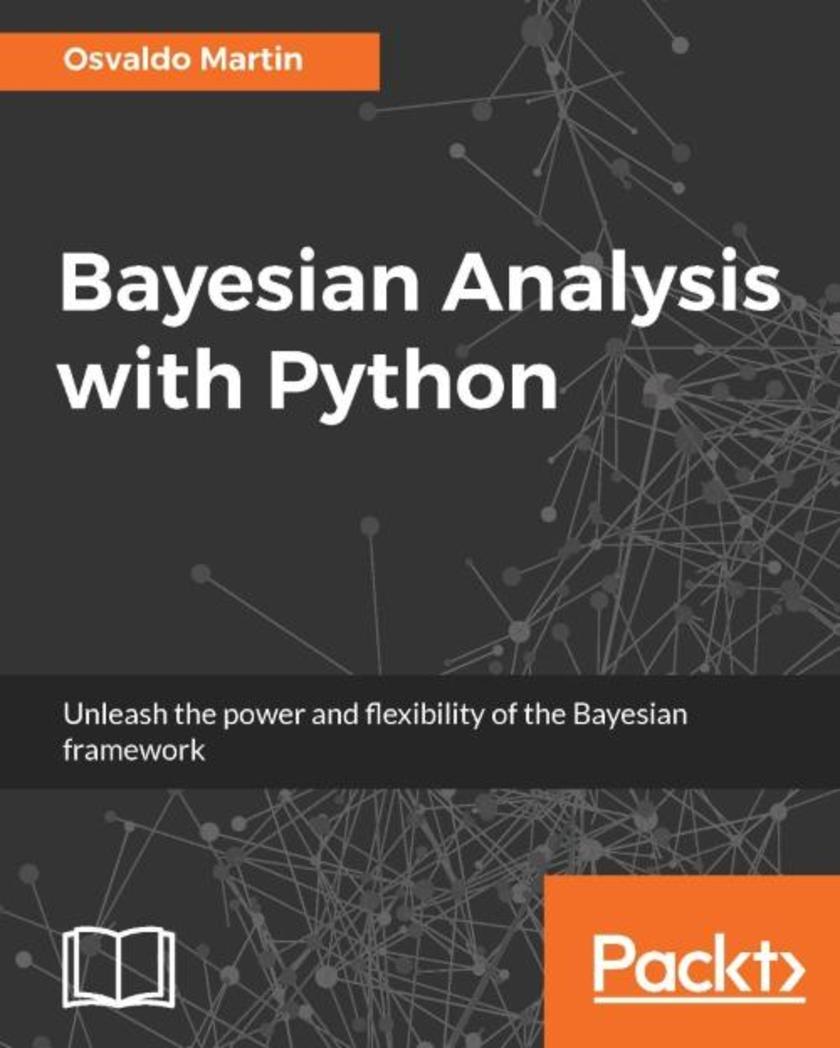
Bayesian Analysis with Python
¥90.46
Unleash the power and flexibility of the Bayesian framework About This Book Simplify the Bayes process for solving complex statistical problems using Python; Tutorial guide that will take the you through the journey of Bayesian analysis with the help of sample problems and practice exercises; Learn how and when to use Bayesian analysis in your applications with this guide. Who This Book Is For Students, researchers and data scientists who wish to learn Bayesian data analysis with Python and implement probabilistic models in their day to day projects. Programming experience with Python is essential. No previous statistical knowledge is assumed. What You Will Learn Understand the essentials Bayesian concepts from a practical point of view Learn how to build probabilistic models using the Python library PyMC3 Acquire the skills to sanity-check your models and modify them if necessary Add structure to your models and get the advantages of hierarchical models Find out how different models can be used to answer different data analysis questions When in doubt, learn to choose between alternative models. Predict continuous target outcomes using regression analysis or assign classes using logistic and softmax regression. Learn how to think probabilistically and unleash the power and flexibility of the Bayesian framework In Detail The purpose of this book is to teach the main concepts of Bayesian data analysis. We will learn how to effectively use PyMC3, a Python library for probabilistic programming, to perform Bayesian parameter estimation, to check models and validate them. This book begins presenting the key concepts of the Bayesian framework and the main advantages of this approach from a practical point of view. Moving on, we will explore the power and flexibility of generalized linear models and how to adapt them to a wide array of problems, including regression and classification. We will also look into mixture models and clustering data, and we will finish with advanced topics like non-parametrics models and Gaussian processes. With the help of Python and PyMC3 you will learn to implement, check and expand Bayesian models to solve data analysis problems. Style and approach Bayes algorithms are widely used in statistics, machine learning, artificial intelligence, and data mining. This will be a practical guide allowing the readers to use Bayesian methods for statistical modelling and analysis using Python.
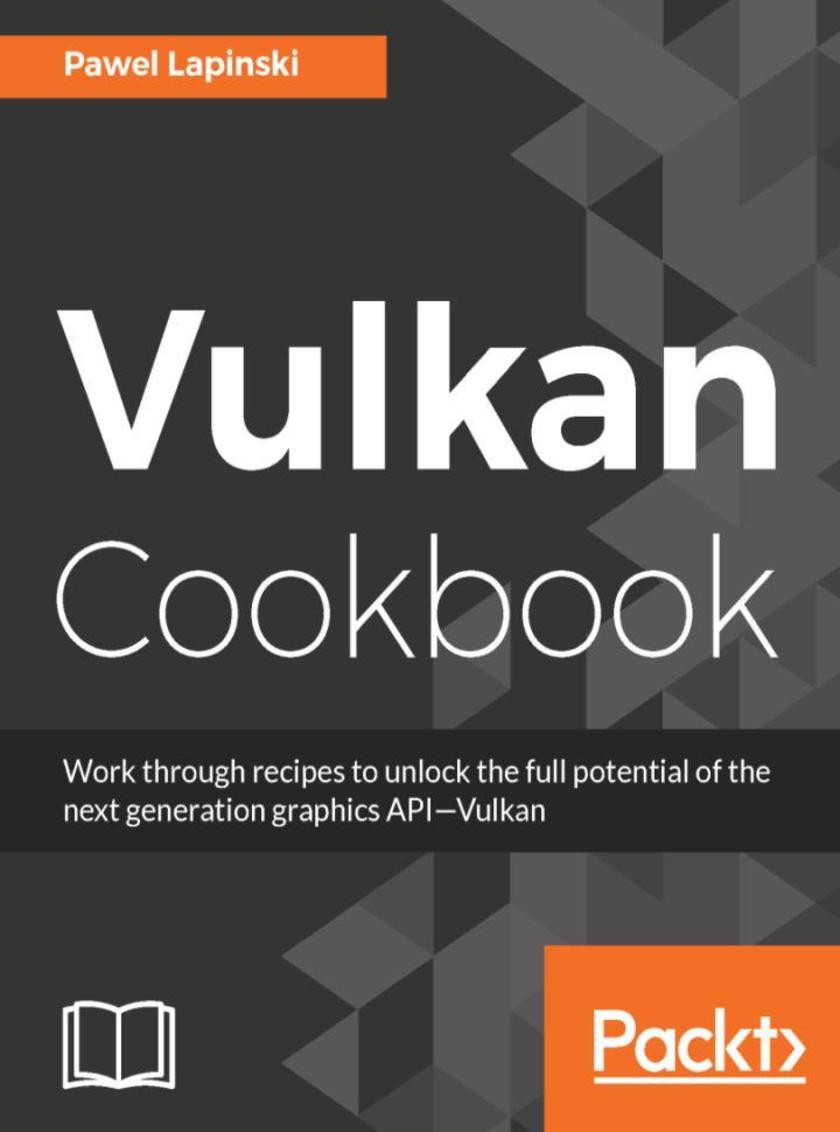
Vulkan Cookbook
¥90.46
Work through recipes to unlock the full potential of the next generation graphics API―Vulkan About This Book ?This book explores a wide range of modern graphics programming techniques and GPU compute methods to make the best use of the Vulkan API ?Learn techniques that can be applied to a wide range of platforms desktop, smartphones, and embedded devices Who This Book Is For This book is ideal for developers who know C/C++ languages, have some basic familiarity with graphics programming, and now want to take advantage of the new Vulkan API in the process of building next generation computer graphics. Some basic familiarity of Vulkan would be useful to follow the recipes. OpenGL developers who want to take advantage of the Vulkan API will also find this book useful. What You Will Learn?Work with Swapchain to present images on screen ?Create, submit, and synchronize operations processed by the hardware ?Create buffers and images, manage their memory, and upload data to them from CPU ?Explore de*or sets and set up an interface between application and shaders ?Organize drawing operations into a set of render passes and subpasses ?Prepare graphics pipelines to draw 3D scenes and compute pipelines to perform mathematical calculations ?Implement geometry projection and tessellation, texturing, lighting, and post-processing techniques ?Write shaders in GLSL and convert them into SPIR-V assemblies ?Find out about and
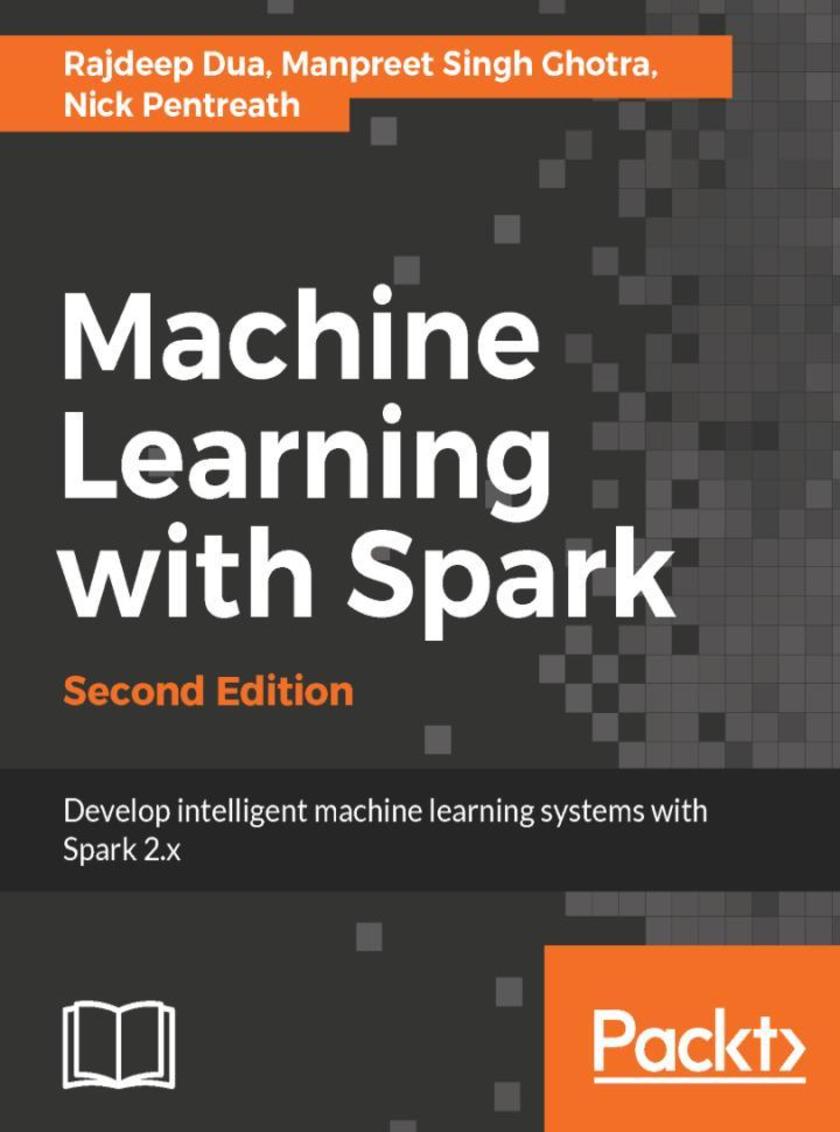
Machine Learning with Spark - Second Edition
¥90.46
"Key Features ?Get to the grips with the latest version of Apache Spark ?Utilize Spark's machine learning library to implement predictive analytics ?Leverage Spark's powerful tools to load, analyze, clean, and transform your data Book De*ion Spark ML is the machine learning module of Spark. It uses in-memory RDDs to process machine learning models faster for clustering, classification, and regression. This book will teach you about popular machine learning algorithms and their implementation. You will learn how various machine learning concepts are implemented in the context of Spark ML. You will start by installing Spark in a single and multinode cluster. Next you'll see how to execute Scala and Python based programs for Spark ML. Then we will take a few datasets and go deeper into clustering, classification, and regression. Toward the end, we will also cover text processing using Spark ML. Once you have learned the concepts, they can be applied to implement algorithms in either green-field implementations or to migrate existing systems to this new platform. You can migrate from Mahout or Scikit to use Spark ML. What you will learn ?Get hands-on with the latest version of Spark ML ?Create your first Spark program with Scala and Python ?Set up and configure a development environment for Spark on your own computer, as well as on Amazon EC2 ?Access public machine learning datasets and use Spark to load, process, clean, and transform data ?Use Spark's machine learning library to implement programs by utilizing well-known machine learning models ?Deal with large-scale text data, including feature extraction and using text data as input to your machine learning models ?Write Spark functions to evaluate the performance of your machine learning models "
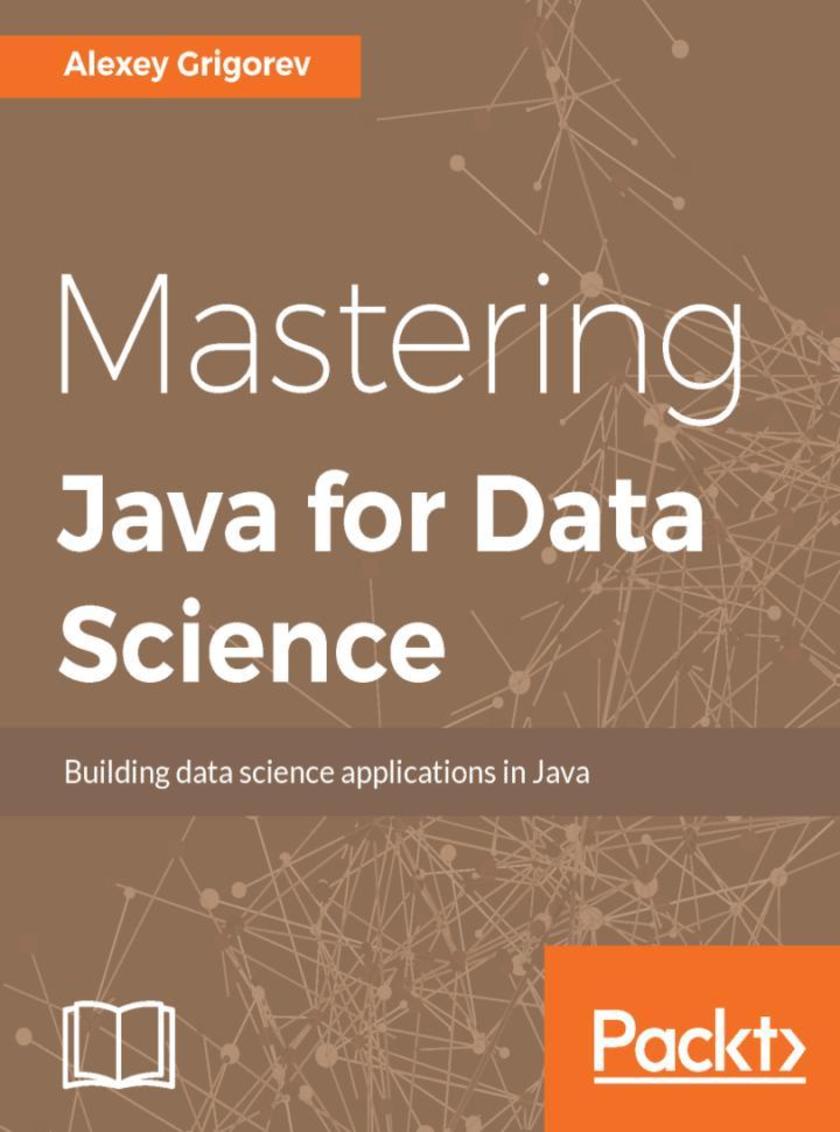
Mastering Java for Data Science
¥90.46
Java is the most popular programming language, according to the TIOBE index, and it is a typical choice for running production systems in many companies, both in the startup world and among large enterprises. Not surprisingly, it is also a common choice for creating data science applications: it is fast and has a great set of data processing tools, both built-in and external. What is more, choosing Java for data science allows you to easily integrate solutions with existing software, and bring data science into production with less effort. This book will teach you how to create data science applications with Java. First, we will revise the most important things when starting a data science application, and then brush up the basics of Java and machine learning before diving into more advanced topics. We start by going over the existing libraries for data processing and libraries with machine learning algorithms. After that, we cover topics such as classification and regression, dimensionality reduction and clustering, information retrieval and natural language processing, and deep learning and big data. Finally, we finish the book by talking about the ways to deploy the model and evaluate it in production settings. What you will learn ?Get a solid understanding of the data processing toolbox available in Java ?Explore the data science ecosystem available in Java
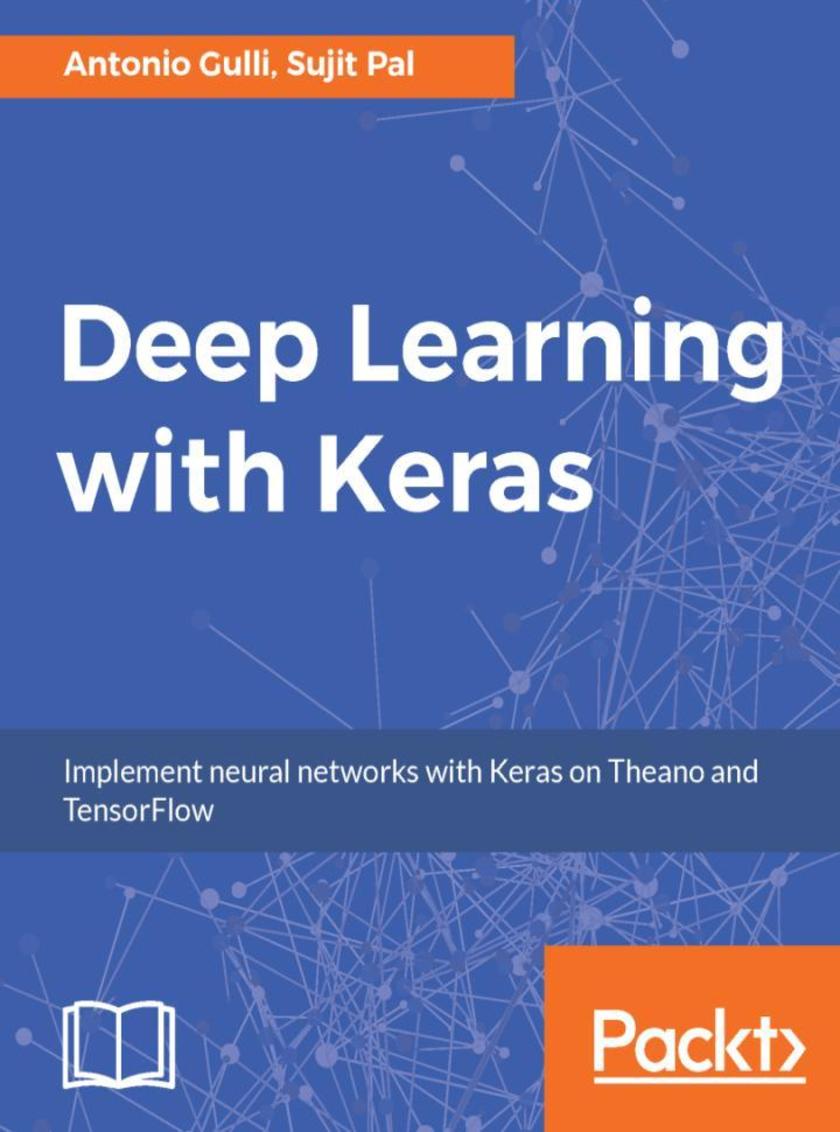
Deep Learning with Keras
¥90.46
This book starts by introducing you to supervised learning algorithms such as simple linear regression, the classical multilayer perceptron and more sophisticated deep convolutional networks. You will also explore image processing with recognition of hand written digit images, classification of images into different categories, and advanced objects recognition with related image annotations. An example of identification of salient points for face detection is also provided. Next you will be introduced to Recurrent Networks, which are optimized for processing sequence data such as text, audio or time series. Following that, you will learn about unsupervised learning algorithms such as Autoencoders and the very popular Generative Adversarial Networks (GAN). You will also explore non-traditional uses of neural networks as Style Transfer. Finally, you will look at Reinforcement Learning and its application to AI game playing, another popular direction of research and application of neural networks. What you will learn ?Optimize step-by-step functions on a large neural network using the Backpropagation Algorithm ?Fine-tune a neural network to improve the quality of results ?Use deep learning for image and audio processing ?Use Recursive Neural Tensor Networks (RNTNs) to outperform standard word embedding in special cases ?Identify problems
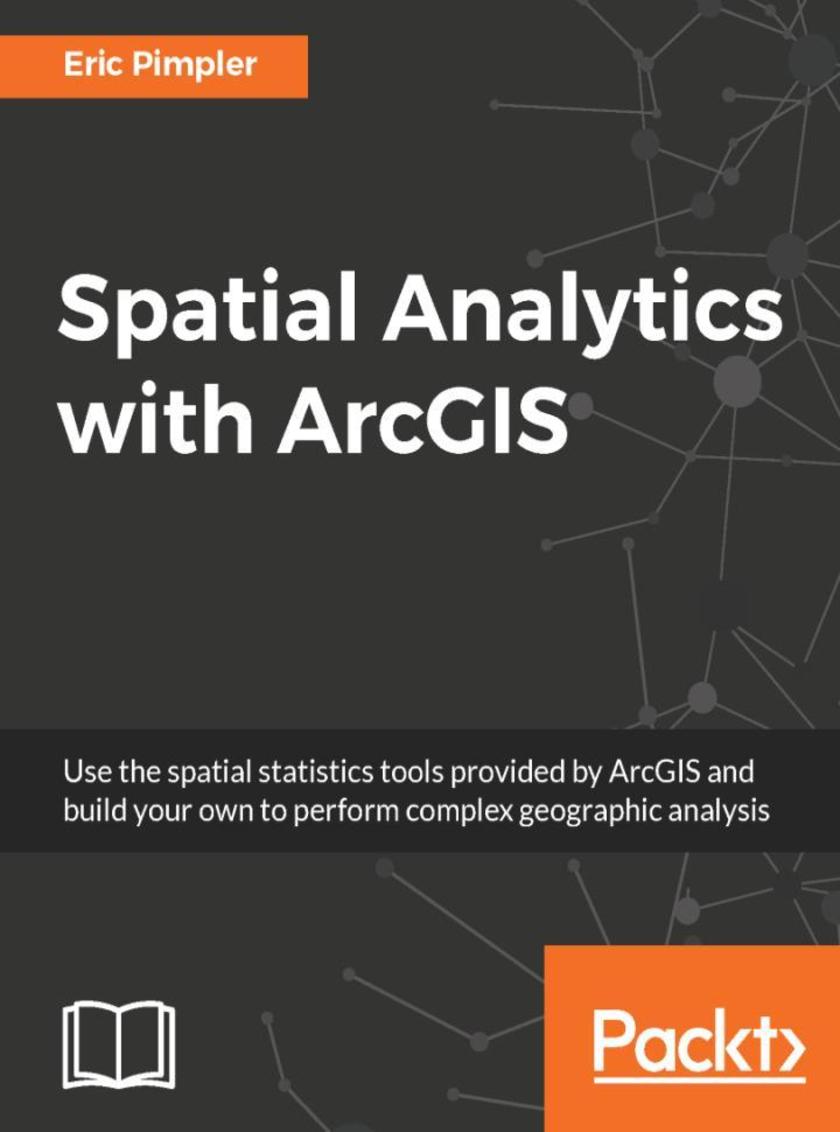
Spatial Analytics with ArcGIS
¥90.46
Spatial statistics has the potential to provide insight that is not otherwise available through traditional GIS tools. This book is designed to introduce you to the use of spatial statistics so you can solve complex geographic analysis. The book begins by introducing you to the many spatial statistics tools available in ArcGIS. You will learn how to analyze patterns, map clusters, and model spatial relationships with these tools. Further on, you will explore how to extend the spatial statistics tools currently available in ArcGIS, and use the R programming language to create custom tools in ArcGIS through the ArcGIS Bridge using real-world examples. At the end of the book, you will be presented with two exciting case studies where you will be able to practically apply all your learning to analyze and gain insights into real estate data. What you will learn ?Get to know how to measure geographic distributions ?Perform clustering analysis including hot spot and outlier analysis ?Conduct data conversion tasks using the Utilities toolset ?Understand how to use the tools provided by the Mapping Clusters toolset in the Spatial Statistics Toolbox ?Get to grips with the basics of R for performing spatial statistical programming ?Create custom ArcGIS tools with R and ArcGIS Bridge ?Understand the application of Spatial Statistics tools
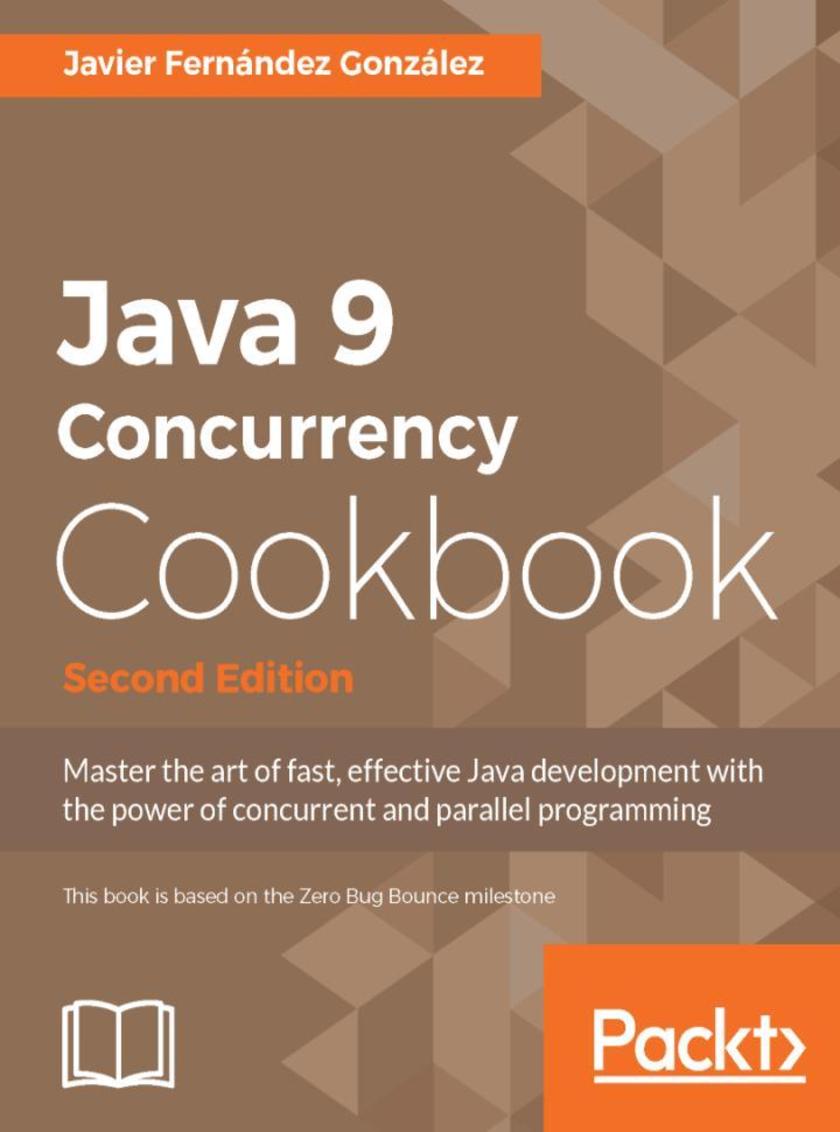
Java 9 Concurrency Cookbook - Second Edition
¥90.46
Writing concurrent and parallel programming applications is an integral skill for any Java programmer. Java 9 comes with a host of fantastic features, including significant performance improvements and new APIs. This book will take you through all the new APIs, showing you how to build parallel and multi-threaded applications. The book covers all the elements of the Java Concurrency API, with essential recipes that will help you take advantage of the exciting new capabilities. You will learn how to use parallel and reactive streams to process massive data sets. Next, you will move on to create streams and use all their intermediate and terminal operations to process big collections of data in a parallel and functional way. Further, you ll discover a whole range of recipes for almost everything, such as thread management, synchronization, executors, parallel and reactive streams, and many more. At the end of the book, you will learn how to obtain information about the status of some of the most useful components of the Java Concurrency API and how to test concurrent applications using different tools. What you will learn ?Find out to manage the basic components of the Java Concurrency API ?Use synchronization mechanisms to avoid data race conditions and other problems of concurrent applications ?Separate the thread management from the rest of the application with the Executor framework ?Solve problems using a parallelized version of the divide and conquer paradigm with the Fork / Join framework ?Process massive data sets in an optimized way using streams and reactive streams ?See which data structures we can use in concurrent applications and how to use them ?Practice efficient techniques to test concurrent applications ?Get to know tips and tricks to design concurrent applications
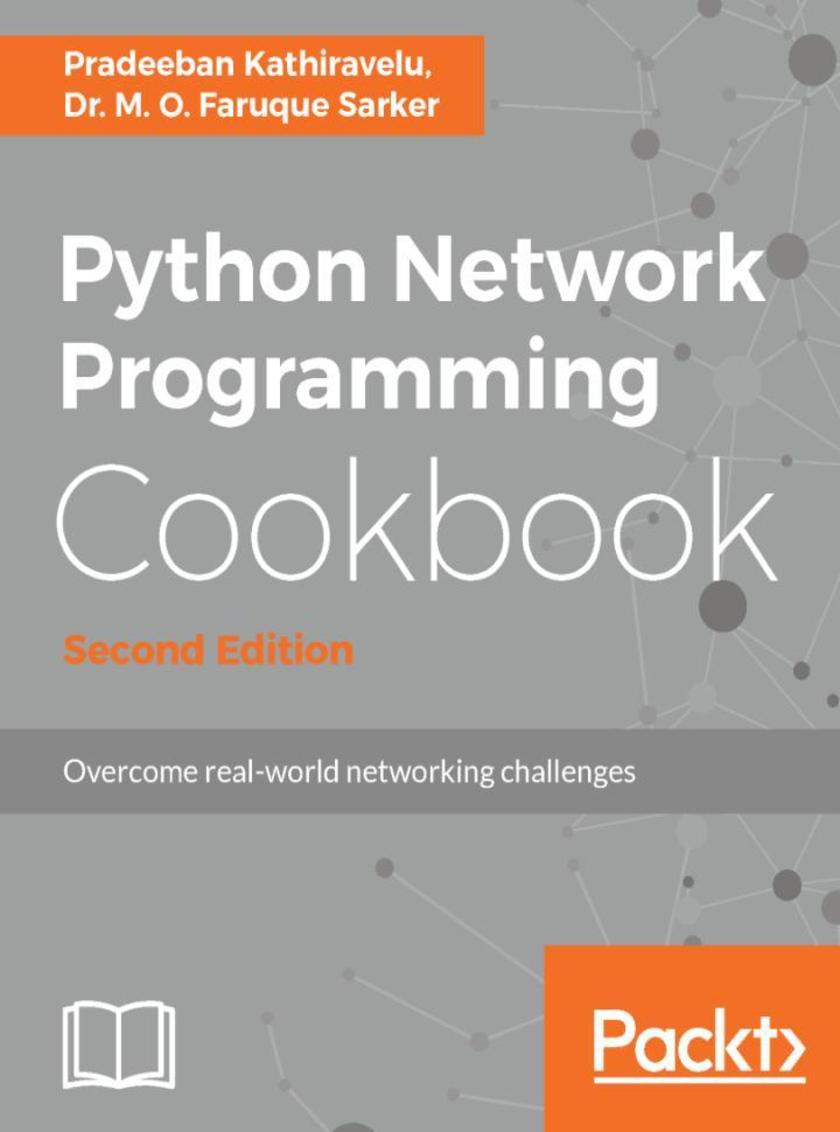
Python Network Programming Cookbook - Second Edition
¥90.46
Discover practical solutions for a wide range of real-world network programming tasks About This Book ? Solve real-world tasks in the area of network programming, system/networking administration, network monitoring, and more. ? Familiarize yourself with the fundamentals and functionalities of SDN ? Improve your skills to become the next-gen network engineer by learning the various facets of Python programming Who This Book Is For This book is for network engineers, system/network administrators, network programmers, and even web application developers who want to solve everyday network-related problems. If you are a novice, you will develop an understanding of the concepts as you progress with this book. What You Will Learn ? Develop TCP/IP networking client/server applications ? Administer local machines' IPv4/IPv6 network interfaces ? Write multi-purpose efficient web clients for HTTP and HTTPS protocols ? Perform remote system administration tasks over Telnet and SSH connections ? Interact with popular websites via web services such as XML-RPC, SOAP, and REST APIs ? Monitor and analyze major common network security vulnerabilities ? Develop Software-Defined Networks with Ryu, OpenDaylight, Floodlight, ONOS, and POX Controllers ? Emulate simple and complex networks with Mininet and its extensions for network and systems emulations ? Learn to configure and build network systems and Virtual Network Functions (VNF) in heterogeneous deployment environments ? Explore various Python modules to program the Internet In Detail Python Network Programming Cookbook - Second Edition highlights the major aspects of network programming in Python, starting from writing simple networking clients to developing and deploying complex Software-Defined Networking (SDN) and Network Functions Virtualization (NFV) systems. It creates the building blocks for many practical web and networking applications that rely on various networking protocols. It presents the power and beauty of Python to solve numerous real-world tasks in the area of network programming, network and system administration, network monitoring, and web-application development. In this edition, you will also be introduced to network modelling to build your own cloud network. You will learn about the concepts and fundamentals of SDN and then extend your network with Mininet. Next, you’ll find recipes on Authentication, Authorization, and Accounting (AAA) and open and proprietary SDN approaches and frameworks. You will also learn to configure the Linux Foundation networking ecosystem and deploy and automate your networks with Python in the cloud and the Internet scale. By the end of this book, you will be able to analyze your network security vulnerabilities using advanced network packet capture and analysis techniques. Style and approach This book follows a practical approach and covers major aspects of network programming in Python. It provides hands-on recipes combined with short and concise explanations on code snippets. This book will serve as a supplementary material to develop hands-on skills in any academic course on network programming. This book further elaborates network softwarization, including Software-Defined Networking (SDN), Network Functions Virtualization (NFV), and orchestration. We learn to configure and deploy enterprise network platforms, develop applications on top of them with Python.
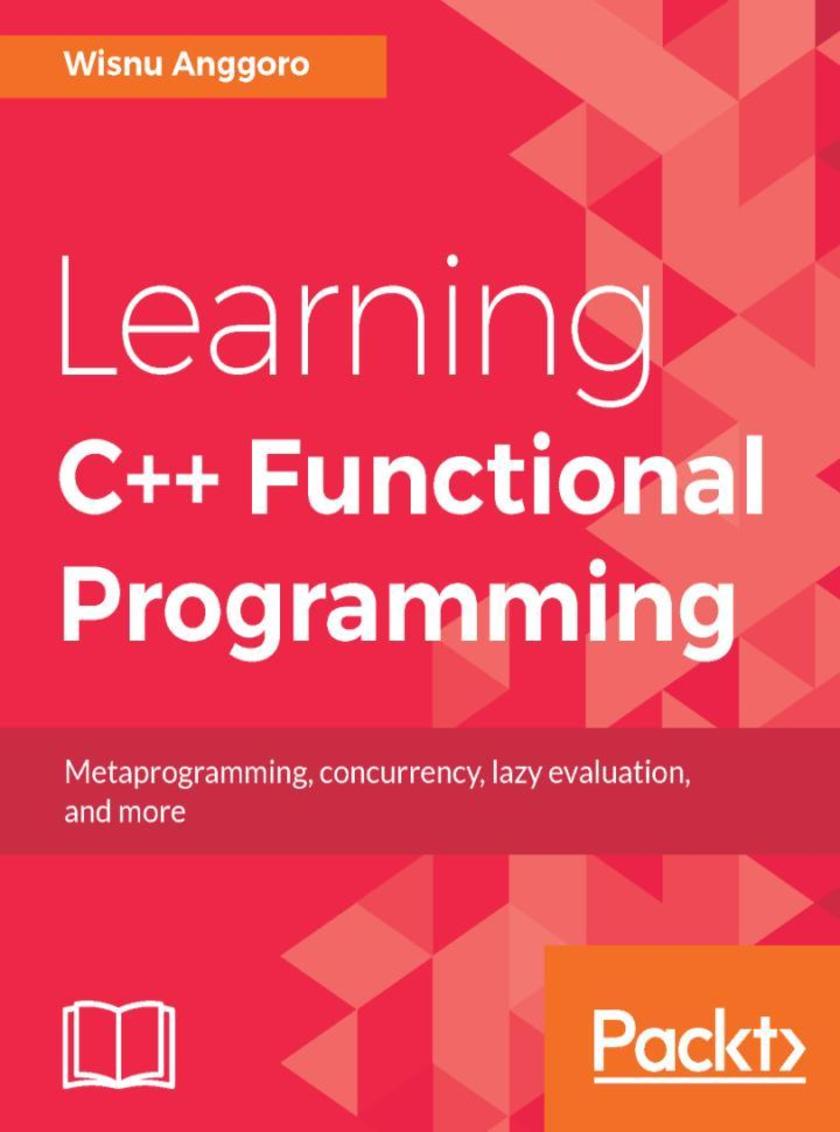
Learning C++ Functional Programming
¥90.46
Apply Functional Programming techniques to C++ to build highly modular, testable, and reusable code About This Book ? Modularize your applications and make them highly reusable and testable ? Get familiar with complex concepts such as metaprogramming, concurrency, and immutability ? A highly practical guide to building functional code in C++ filled with lots of examples and real-world use cases Who This Book Is For This book is for C++ developers comfortable with OOP who are interested in learning how to apply the functional paradigm to create robust and testable apps. What You Will Learn ? Get to know the difference between imperative and functional approaches ? See the use of first-class functions and pure functions in a functional style ? Discover various techniques to apply immutable state to avoid side effects ? Design a recursive algorithm effectively ? Create faster programs using lazy evaluation ? Structure code using design patterns to make the design process easier ? Use concurrency techniques to develop responsive software ? Learn how to use the C++ Standard Template Library and metaprogramming in a functional way to improve code optimization In Detail Functional programming allows developers to divide programs into smaller, reusable components that ease the creation, testing, and maintenance of software as a whole. Combined with the power of C++, you can develop robust and scalable applications that fulfill modern day software requirements. This book will help you discover all the C++ 17 features that can be applied to build software in a functional way. The book is divided into three modules—the first introduces the fundamentals of functional programming and how it is supported by modern C++. The second module explains how to efficiently implement C++ features such as pure functions and immutable states to build robust applications. The last module describes how to achieve concurrency and apply design patterns to enhance your application’s performance. Here, you will also learn to optimize code using metaprogramming in a functional way. By the end of the book, you will be familiar with the functional approach of programming and will be able to use these techniques on a daily basis. Style and approach This book uses a module-based approach, where each module will cover important aspects of functional programming in C++ and will help you develop efficient and robust applications through gaining a practical understanding.
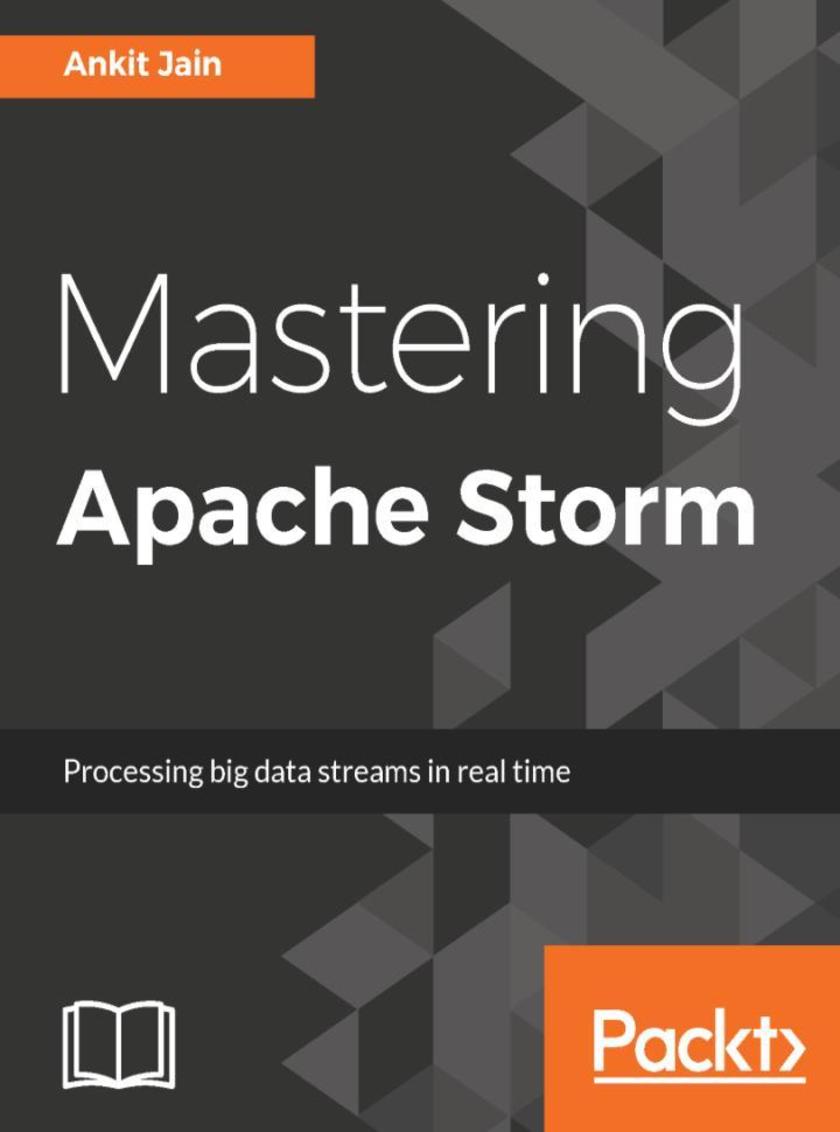
Mastering Apache Storm
¥90.46
Master the intricacies of Apache Storm and develop real-time stream processing applications with ease About This Book ? Exploit the various real-time processing functionalities offered by Apache Storm such as parallelism, data partitioning, and more ? Integrate Storm with other Big Data technologies like Hadoop, HBase, and Apache Kafka ? An easy-to-understand guide to effortlessly create distributed applications with Storm Who This Book Is For If you are a Java developer who wants to enter into the world of real-time stream processing applications using Apache Storm, then this book is for you. No previous experience in Storm is required as this book starts from the basics. After finishing this book, you will be able to develop not-so-complex Storm applications. What You Will Learn ? Understand the core concepts of Apache Storm and real-time processing ? Follow the steps to deploy multiple nodes of Storm Cluster ? Create Trident topologies to support various message-processing semantics ? Make your cluster sharing effective using Storm scheduling ? Integrate Apache Storm with other Big Data technologies such as Hadoop, HBase, Kafka, and more ? Monitor the health of your Storm cluster In Detail Apache Storm is a real-time Big Data processing framework that processes large amounts of data reliably, guaranteeing that every message will be processed. Storm allows you to scale your data as it grows, making it an excellent platform to solve your big data problems. This extensive guide will help you understand right from the basics to the advanced topics of Storm. The book begins with a detailed introduction to real-time processing and where Storm fits in to solve these problems. You’ll get an understanding of deploying Storm on clusters by writing a basic Storm Hello World example. Next we’ll introduce you to Trident and you’ll get a clear understanding of how you can develop and deploy a trident topology. We cover topics such as monitoring, Storm Parallelism, scheduler and log processing, in a very easy to understand manner. You will also learn how to integrate Storm with other well-known Big Data technologies such as HBase, Redis, Kafka, and Hadoop to realize the full potential of Storm. With real-world examples and clear explanations, this book will ensure you will have a thorough mastery of Apache Storm. You will be able to use this knowledge to develop efficient, distributed real-time applications to cater to your business needs. Style and approach This easy-to-follow guide is full of examples and real-world applications to help you get an in-depth understanding of Apache Storm. This book covers the basics thoroughly and also delves into the intermediate and slightly advanced concepts of application development with Apache Storm.
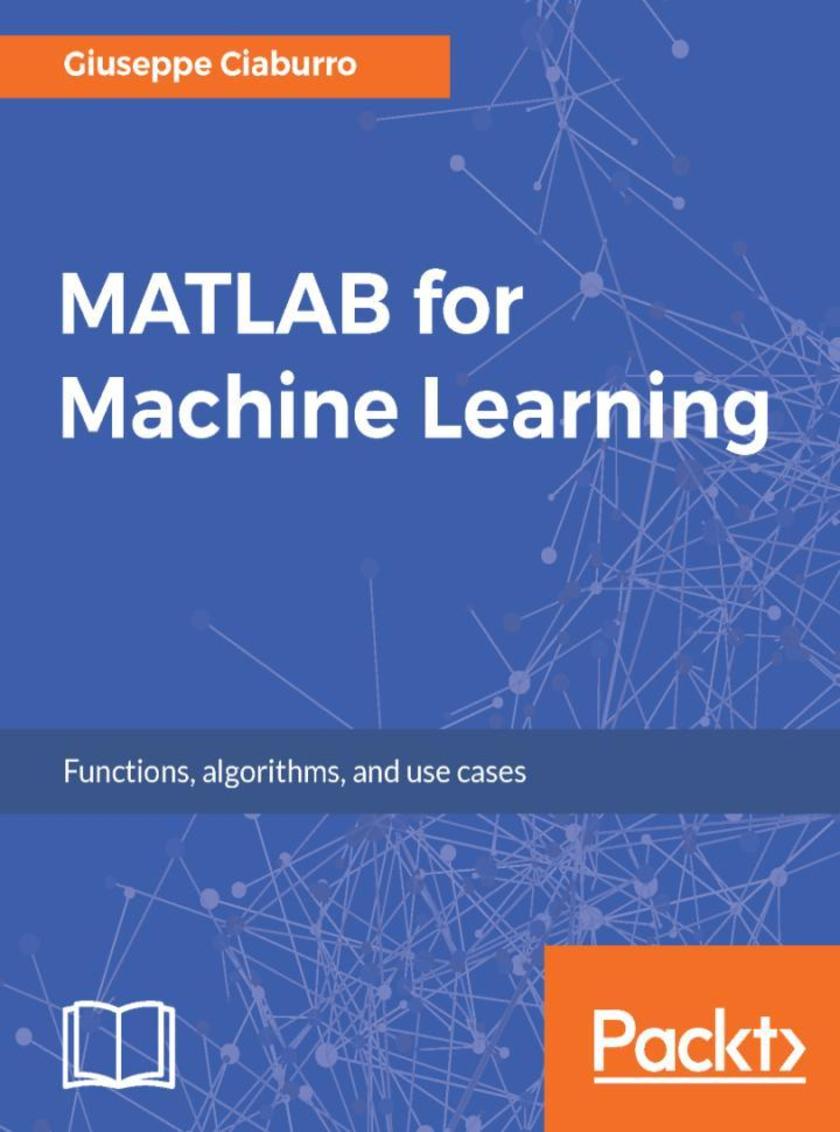
MATLAB for Machine Learning
¥90.46
Extract patterns and knowledge from your data in easy way using MATLAB About This Book ? Get your first steps into machine learning with the help of this easy-to-follow guide ? Learn regression, clustering, classification, predictive analytics, artificial neural networks and more with MATLAB ? Understand how your data works and identify hidden layers in the data with the power of machine learning. Who This Book Is For This book is for data analysts, data scientists, students, or anyone who is looking to get started with machine learning and want to build efficient data processing and predicting applications. A mathematical and statistical background will really help in following this book well. What You Will Learn ? Learn the introductory concepts of machine learning. ? Discover different ways to transform data using SAS XPORT, import and export tools, ? Explore the different types of regression techniques such as simple & multiple linear regression, ordinary least squares estimation, correlations and how to apply them to your data. ? Discover the basics of classification methods and how to implement Naive Bayes algorithm and Decision Trees in the Matlab environment. ? Uncover how to use clustering methods like hierarchical clustering to grouping data using the similarity measures. ? Know how to perform data fitting, pattern recognition, and clustering analysis with the help of MATLAB Neural Network Toolbox. ? Learn feature selection and extraction for dimensionality reduction leading to improved performance. In Detail MATLAB is the language of choice for many researchers and mathematics experts for machine learning. This book will help you build a foundation in machine learning using MATLAB for beginners. You’ll start by getting your system ready with t he MATLAB environment for machine learning and you’ll see how to easily interact with the Matlab workspace. We’ll then move on to data cleansing, mining and analyzing various data types in machine learning and you’ll see how to display data values on a plot. Next, you’ll get to know about the different types of regression techniques and how to apply them to your data using the MATLAB functions. You’ll understand the basic concepts of neural networks and perform data fitting, pattern recognition, and clustering analysis. Finally, you’ll explore feature selection and extraction techniques for dimensionality reduction for performance improvement. At the end of the book, you will learn to put it all together into real-world cases covering major machine learning algorithms and be comfortable in performing machine learning with MATLAB. Style and approach The book takes a very comprehensive approach to enhance your understanding of machine learning using MATLAB. Sufficient real-world examples and use cases are included in the book to help you grasp the concepts quickly and apply them easily in your day-to-day work.

Mastering Machine Learning with Spark 2.x
¥90.46
Unlock the complexities of machine learning algorithms in Spark to generate useful data insights through this data analysis tutorial About This Book ? Process and analyze big data in a distributed and scalable way ? Write sophisticated Spark pipelines that incorporate elaborate extraction ? Build and use regression models to predict flight delays Who This Book Is For Are you a developer with a background in machine learning and statistics who is feeling limited by the current slow and “small data” machine learning tools? Then this is the book for you! In this book, you will create scalable machine learning applications to power a modern data-driven business using Spark. We assume that you already know the machine learning concepts and algorithms and have Spark up and running (whether on a cluster or locally) and have a basic knowledge of the various libraries contained in Spark. What You Will Learn ? Use Spark streams to cluster tweets online ? Run the PageRank algorithm to compute user influence ? Perform complex manipulation of DataFrames using Spark ? Define Spark pipelines to compose individual data transformations ? Utilize generated models for off-line/on-line prediction ? Transfer the learning from an ensemble to a simpler Neural Network ? Understand basic graph properties and important graph operations ? Use GraphFrames, an extension of DataFrames to graphs, to study graphs using an elegant query language ? Use K-means algorithm to cluster movie reviews dataset In Detail The purpose of machine learning is to build systems that learn from data. Being able to understand trends and patterns in complex data is critical to success; it is one of the key strategies to unlock growth in the challenging contemporary marketplace today. With the meteoric rise of machine learning, developers are now keen on finding out how can they make their Spark applications smarter. This book gives you access to transform data into actionable knowledge. The book commences by defining machine learning primitives by the MLlib and H2O libraries. You will learn how to use Binary classification to detect the Higgs Boson particle in the huge amount of data produced by CERN particle collider and classify daily health activities using ensemble Methods for Multi-Class Classification. Next, you will solve a typical regression problem involving flight delay predictions and write sophisticated Spark pipelines. You will analyze Twitter data with help of the doc2vec algorithm and K-means clustering. Finally, you will build different pattern mining models using MLlib, perform complex manipulation of DataFrames using Spark and Spark SQL, and deploy your app in a Spark streaming environment. Style and approach This book takes a practical approach to help you get to grips with using Spark for analytics and to implement machine learning algorithms. We'll teach you about advanced applications of machine learning through illustrative examples. These examples will equip you to harness the potential of machine learning, through Spark, in a variety of enterprise-grade systems.
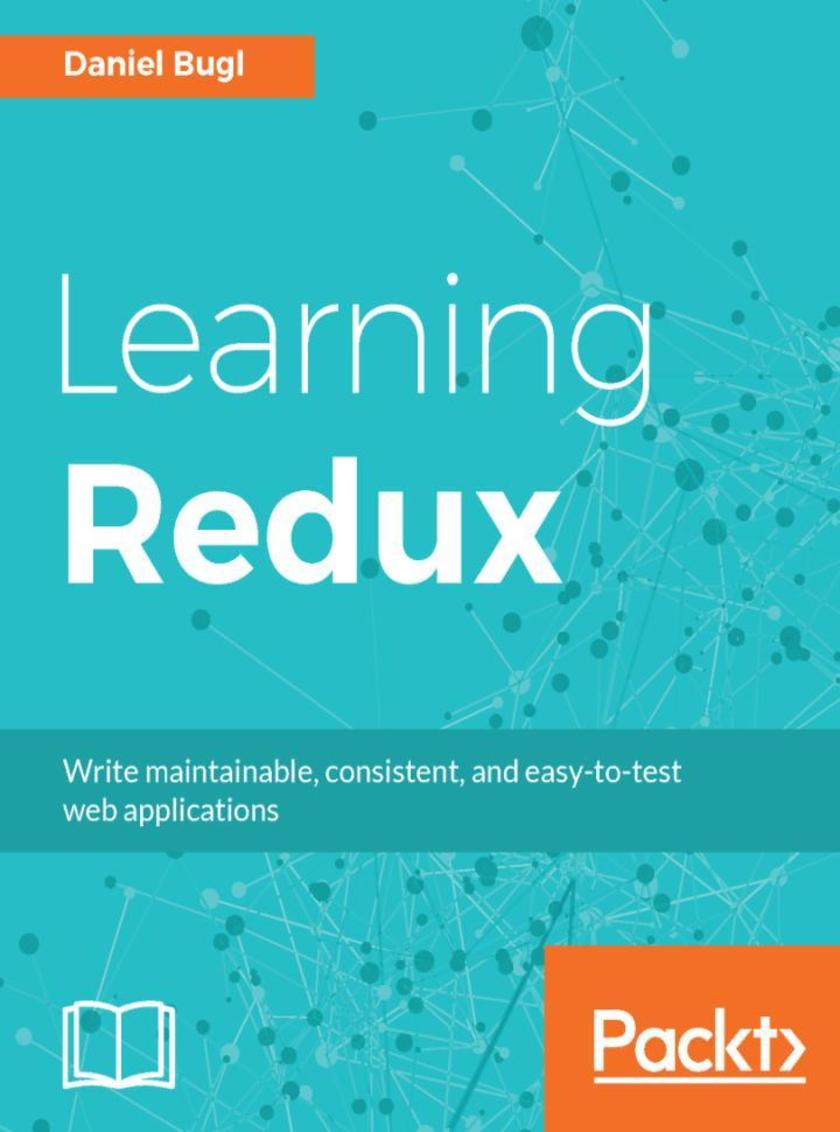
Learning Redux
¥90.46
Build consistent web apps with Redux by easily centralizing the state of your application. About This Book ? Write applications that behave consistently, run in different environments (client, server and native), and are easy to test ? Take your web apps to the next level by combining the power of Redux with other frameworks such as React and Angular ? Uncover the best practices and hidden features of Redux to build applications that are powerful, consistent, and maintainable Who This Book Is For This book targets developers who are already fluent in JavaScript but want to extend their web development skills to develop and maintain bigger applications. What You Will Learn ? Understand why and how Redux works ? Implement the basic elements of Redux ? Use Redux in combination with React/Angular to develop a web application ? Debug a Redux application ? Interface with external APIs with Redux ? Implement user authentication with Redux ? Write tests for all elements of a Redux application ? Implement simple and more advanced routing with Redux ? Learn about server-side rendering with Redux and React ? Create higher-order reducers for Redux ? Extend the Redux store via middleware In Detail The book starts with a short introduction to the principles and the ecosystem of Redux, then moves on to show how to implement the basic elements of Redux and put them together. Afterward, you are going to learn how to integrate Redux with other frameworks, such as React and Angular. Along the way, you are going to develop a blog application. To practice developing growing applications with Redux, we are going to start from nothing and keep adding features to our application throughout the book. You are going to learn how to integrate and use Redux DevTools to debug applications, and access external APIs with Redux. You are also going to get acquainted with writing tests for all elements of a Redux application. Furthermore, we are going to cover important concepts in web development, such as routing, user authentication, and communication with a backend server After explaining how to use Redux and how powerful its ecosystem can be, the book teaches you how to make your own abstractions on top of Redux, such as higher-order reducers and middleware. By the end of the book, you are going to be able to develop and maintain Redux applications with ease. In addition to learning about Redux, you are going be familiar with its ecosystem, and learn a lot about JavaScript itself, including best practices and patterns. Style and approach This practical guide will teach you how to develop a complex, data-intensive application leveraging the capabilities of the Redux framework.
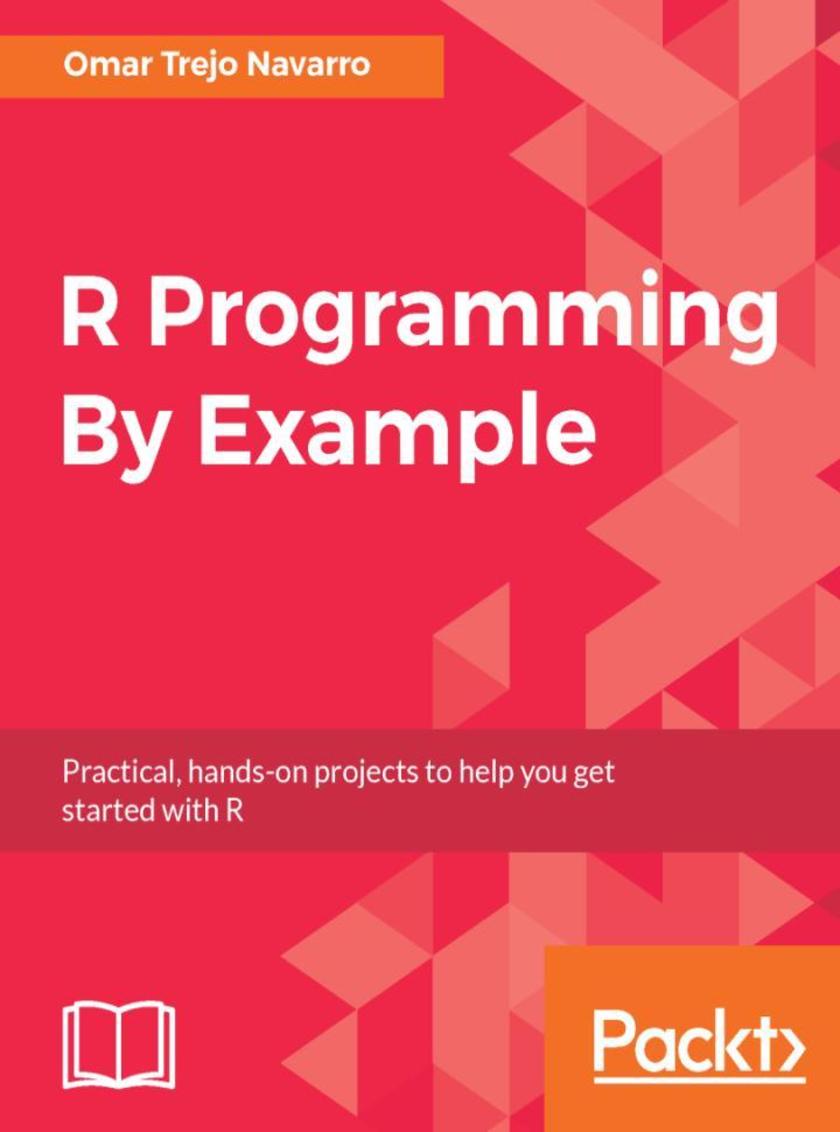
R Programming By Example
¥90.46
This step-by-step guide demonstrates how to build simple-to-advanced applications through examples in R using modern tools. About This Book ? Get a firm hold on the fundamentals of R through practical hands-on examples ? Get started with good R programming fundamentals for data science ? Exploit the different libraries of R to build interesting applications in R Who This Book Is For This books is for aspiring data science professionals or statisticians who would like to learn about the R programming language in a practical manner. Basic programming knowledge is assumed. What You Will Learn ? Discover techniques to leverage R’s features, and work with packages ? Perform a de*ive analysis and work with statistical models using R ? Work efficiently with objects without using loops ? Create diverse visualizations to gain better understanding of the data ? Understand ways to produce good visualizations and create reports for the results ? Read and write data from relational databases and REST APIs, both packaged and unpackaged ? Improve performance by writing better code, delegating that code to a more efficient programming language, or making it parallel In Detail R is a high-level statistical language and is widely used among statisticians and data miners to develop analytical applications. Often, data analysis people with great analytical skills lack solid programming knowledge and are unfamiliar with the correct ways to use R. Based on the version 3.4, this book will help you develop strong fundamentals when working with R by taking you through a series of full representative examples, giving you a holistic view of R. We begin with the basic installation and configuration of the R environment. As you progress through the exercises, you'll become thoroughly acquainted with R's features and its packages. With this book, you will learn about the basic concepts of R programming, work efficiently with graphs, create publication-ready and interactive 3D graphs, and gain a better understanding of the data at hand. The detailed step-by-step instructions will enable you to get a clean set of data, produce good visualizations, and create reports for the results. It also teaches you various methods to perform code profiling and performance enhancement with good programming practices, delegation, and parallelization. By the end of this book, you will know how to efficiently work with data, create quality visualizations and reports, and develop code that is modular, expressive, and maintainable. Style and Approach This is an easy-to-understand guide filled with real-world examples, giving you a holistic view of R and practical, hands-on experience.




 购物车
购物车 个人中心
个人中心



